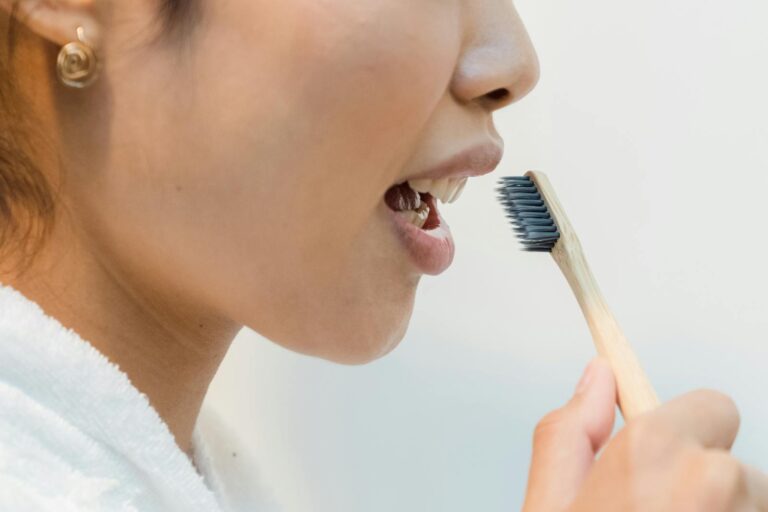What Causes Chronic Bad Breath Even After Brushing Teeth?
Let’s face it: there’s nothing quite as embarrassing as someone stepping back mid-conversation—and you realize it might be your breath. You’ve brushed your teeth twice a day, maybe even more. You floss, you rinse. So why does that foul smell still linger?
You’re not alone. Chronic bad breath (also known as halitosis) that persists even after good oral hygiene can be frustrating. But here’s the thing: brushing your teeth is just one piece of the puzzle.
1. The Tongue: A Hidden Culprit
You might be brushing your teeth religiously, but if you’re skipping your tongue, you’re missing a major source of bad breath. The surface of the tongue, especially the back third, is like a shaggy carpet that traps bacteria, food particles, dead cells, and even postnasal drip. These materials ferment and produce volatile sulfur compounds (VSCs)—which are the main culprits behind that persistent bad odor.
It doesn’t help that the tongue is full of tiny crevices and papillae, giving bacteria plenty of hiding spots. Even mouthwash may not fully reach these areas.
Dentist tip: Make tongue cleaning a daily habit. Use a tongue scraper or a soft toothbrush to gently clean from the back of your tongue to the front. Don’t overdo it—be gentle to avoid irritation—but be consistent. This simple step can significantly improve your breath and overall oral hygiene.
2. Gum Disease (Periodontitis)
Chronic bad breath might not be just a cosmetic issue—it can be a red flag for gum disease, also known as periodontitis. This condition develops when plaque, a sticky film of bacteria, hardens into tartar and creeps below the gumline. Once there, it triggers inflammation and creates deep pockets between the teeth and gums where bacteria thrive. These bacteria produce volatile sulfur compounds and other toxins, which are responsible for that persistent, unpleasant odor.
The problem is that regular brushing and flossing often can’t reach deep into these pockets. So even if you’re doing everything “right,” the bacteria hiding beneath your gums may still be active and multiplying.
Watch for warning signs like bleeding when brushing or flossing, gums that feel tender or swollen, receding gums, or a bad taste in your mouth that just won’t go away. If you notice any of these, don’t wait—gum disease is progressive, and the sooner it’s treated by a dental professional, the better your chances of reversing it and saying goodbye to chronic bad breath.
3. Dry Mouth (Xerostomia)
You might not realize it, but your saliva does a lot more than just keep your mouth moist. It plays a vital role in maintaining oral health by constantly rinsing away food particles, dead cells, and bacteria, while also neutralizing the acids that can cause tooth decay. When your mouth doesn’t produce enough saliva, it’s like shutting off the faucet in your self-cleaning sink.
Dry mouth, or xerostomia, creates an environment where odor-causing bacteria can thrive. This can happen for a variety of reasons: side effects from medications (especially antihistamines, antidepressants, or blood pressure drugs), breathing through your mouth while sleeping, or simply not drinking enough water throughout the day. Smokers and caffeine lovers may also experience dry mouth more frequently.
The result? A sticky, uncomfortable sensation in your mouth, difficulty speaking or swallowing, and yes—persistent bad breath that brushing can’t fix.
Dentist tip: Stay hydrated by sipping water regularly. Chew sugar-free gum or suck on xylitol mints to help stimulate saliva flow. If the problem is persistent, talk to your dentist or doctor about saliva substitutes or medications that can help manage dry mouth. Addressing this issue early can make a significant difference not just for your breath, but for your entire oral ecosystem.
4. Postnasal Drip & Sinus Issues
Believe it or not, bad breath isn’t always caused by something going wrong inside your mouth. In many cases, it starts in the nose and throat—particularly with conditions like postnasal drip, chronic sinusitis, or even seasonal allergies.
Postnasal drip happens when excess mucus from your sinuses trickles down the back of your throat. This mucus doesn’t just feel unpleasant—it becomes a food source for anaerobic bacteria that live at the base of the tongue and in the throat. As these bacteria break down the proteins in mucus, they release volatile sulfur compounds, which give off that telltale bad smell.
In addition to chronic halitosis, people dealing with postnasal drip often report a salty or metallic taste, frequent throat clearing, a constant need to swallow, or the sensation of a lump in the throat. Sinus congestion and a dull headache might also accompany it.
Dentist tip: If you suspect your breath issues are tied to sinus problems or allergies, consider seeing an ENT specialist. Managing your allergies, using saline nasal sprays, staying well-hydrated, or even using a neti pot for sinus rinsing can reduce mucus buildup and help freshen your breath from the inside out.
5. Your Diet (Yes, Even After Brushing)
Some foods are notorious for causing bad breath, and unfortunately, brushing your teeth may not be enough to eliminate the odor. Take garlic and onions, for example: while their strong flavors start in the mouth, the real reason they cause persistent bad breath is because their odor-causing compounds are absorbed into the bloodstream. These compounds are then carried to your lungs and exhaled when you breathe—meaning no amount of brushing can fully mask the smell until your body metabolizes them.
The same goes for coffee, spicy dishes, and certain fermented or pickled foods. These can affect the pH of your mouth or leave behind strong-smelling oils that linger on your breath for hours.
In addition, your overall eating pattern plays a role. High-protein, low-carb, or ketogenic diets often lead to a condition called “ketosis,” where your body burns fat for fuel and produces ketones. One type, called acetone, is released through your breath and can have a fruity or even nail polish-like scent—commonly referred to as “ketone breath.”
Dentist tip: While you don’t have to give up your favorite foods, it helps to pair strong-smelling meals with crunchy fruits and vegetables like apples or carrots that help clean your mouth naturally. Drinking water during and after meals also helps flush away food particles and dilute lingering odors. And for those on special diets, be mindful of how your nutritional choices might impact your breath—a few adjustments can go a long way.
6. Tonsil Stones (Tonsilloliths)
Tonsil stones, also known as tonsilloliths, are small, calcified deposits that form in the crevices (crypts) of the tonsils. These stones are made up of a combination of mucus, dead cells, food particles, and bacteria. Over time, this debris hardens into tiny, white or yellowish lumps that can be seen at the back of the throat.
Although small in size, tonsil stones can pack a powerful odor. That’s because the bacteria involved in their formation produce volatile sulfur compounds—the same foul-smelling gases responsible for bad breath. So, even if you brush and floss thoroughly, the presence of tonsil stones can continue to cause chronic halitosis.
Common symptoms include a persistent bad taste in the mouth, a sensation of something stuck in your throat, difficulty swallowing, or visible white specks near the tonsils. Some people even cough them up unexpectedly.
Dentist tip: If you suspect tonsil stones are contributing to your bad breath, try gargling with warm salt water or using a water flosser to gently flush out the crypts. For frequent or bothersome cases, consider seeing an ENT specialist to explore more long-term solutions, such as laser cryptolysis or, in severe cases, tonsil removal.
7. Medical Conditions
Not all cases of chronic bad breath stem from poor oral hygiene or local issues in the mouth. Sometimes, halitosis can be a sign of an underlying systemic health condition. For instance, acid reflux (GERD) allows stomach acids and partially digested food to travel back into the esophagus and even reach the throat and mouth, carrying with it an unpleasant odor. Similarly, uncontrolled diabetes can lead to a condition called ketoacidosis, which causes a distinctive fruity or acetone-like breath.
Other serious conditions such as liver disease, kidney failure, and certain types of cancer can also alter the body’s chemistry in ways that produce unusual and persistent odors on the breath. In these cases, the bad breath is usually not caused by oral bacteria, but rather by metabolic byproducts being expelled through the lungs.
Dentist tip: If your oral health is in check but you still suffer from bad breath, it’s important not to ignore it. Keep track of any other symptoms you might be experiencing—such as unexplained fatigue, changes in weight, or digestive discomfort—and share them with your physician. A thorough medical evaluation may uncover the root of the problem and lead to more effective treatment.
Final Thoughts from the Dental Chair
Brushing your teeth is essential, but if you’re still struggling with bad breath, it’s time to dig deeper. Chronic halitosis is usually a symptom, not the root problem. By understanding the full picture—from tongue hygiene to sinus issues—you can finally tackle bad breath at its source.
If this sounds like you, don’t guess. Book an appointment with your dentist. A proper diagnosis is the first step toward fresher breath and confident conversations.
References
American Dental Association (ADA) – Information on halitosis causes and treatment.
Mayo Clinic – Articles on bad breath, gum disease, and related medical conditions like GERD and diabetes.
Cleveland Clinic – Information on tonsil stones, dry mouth, and systemic health conditions linked to halitosis.



